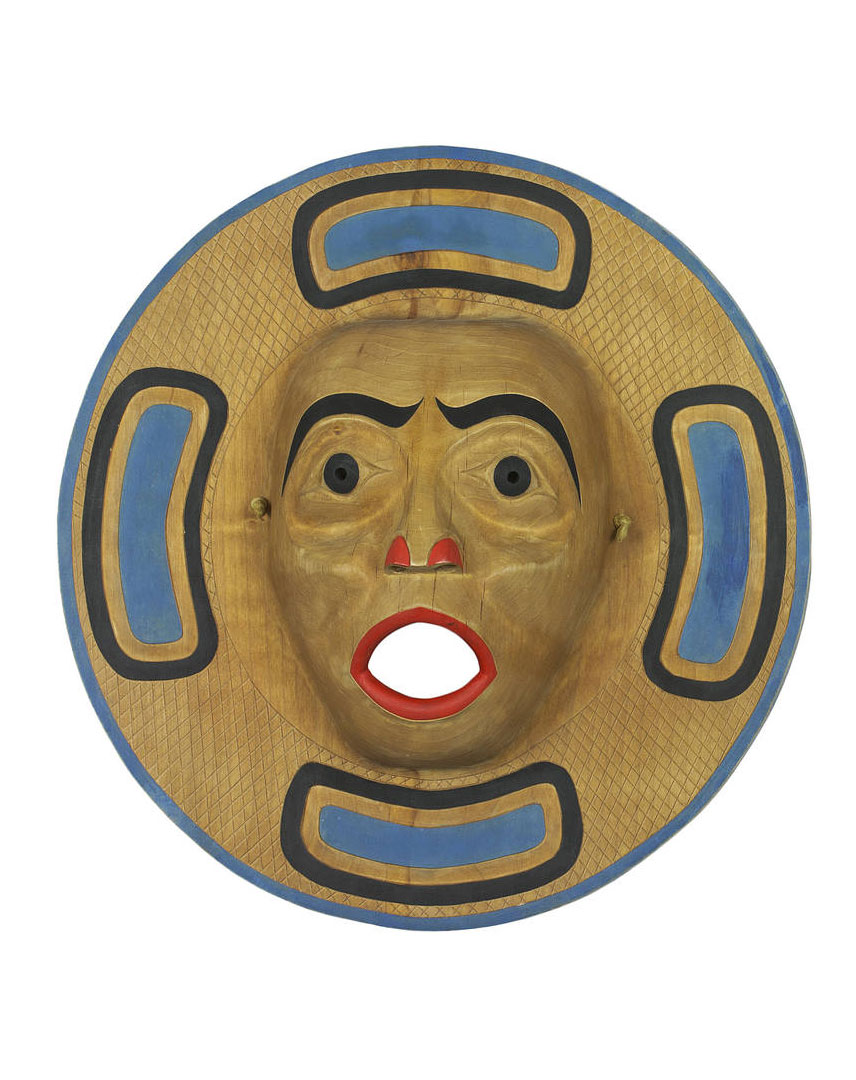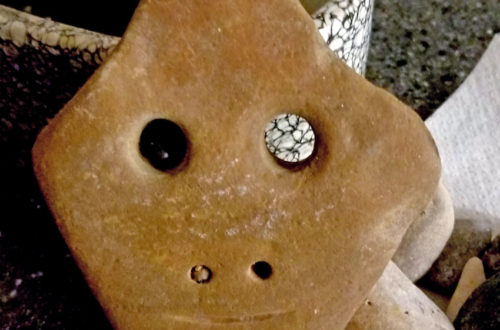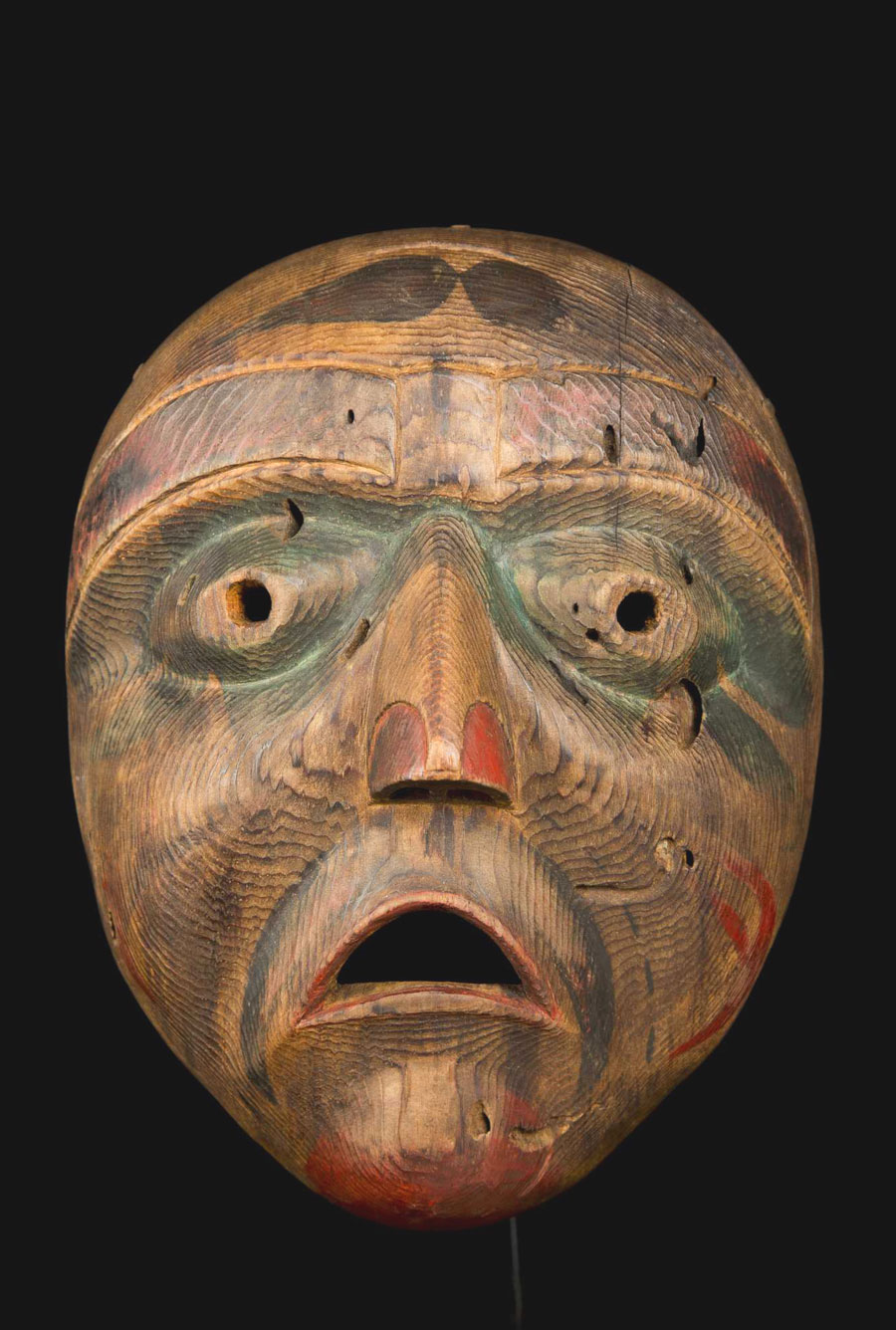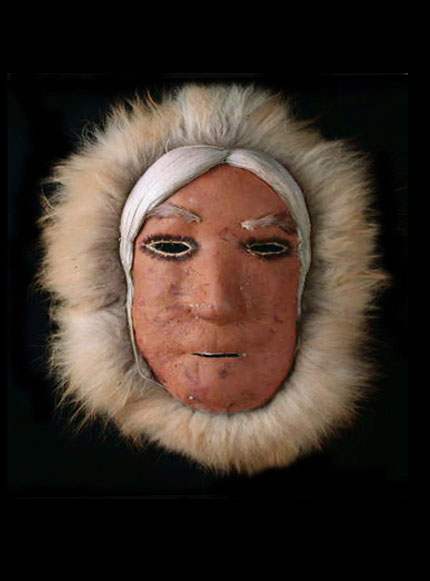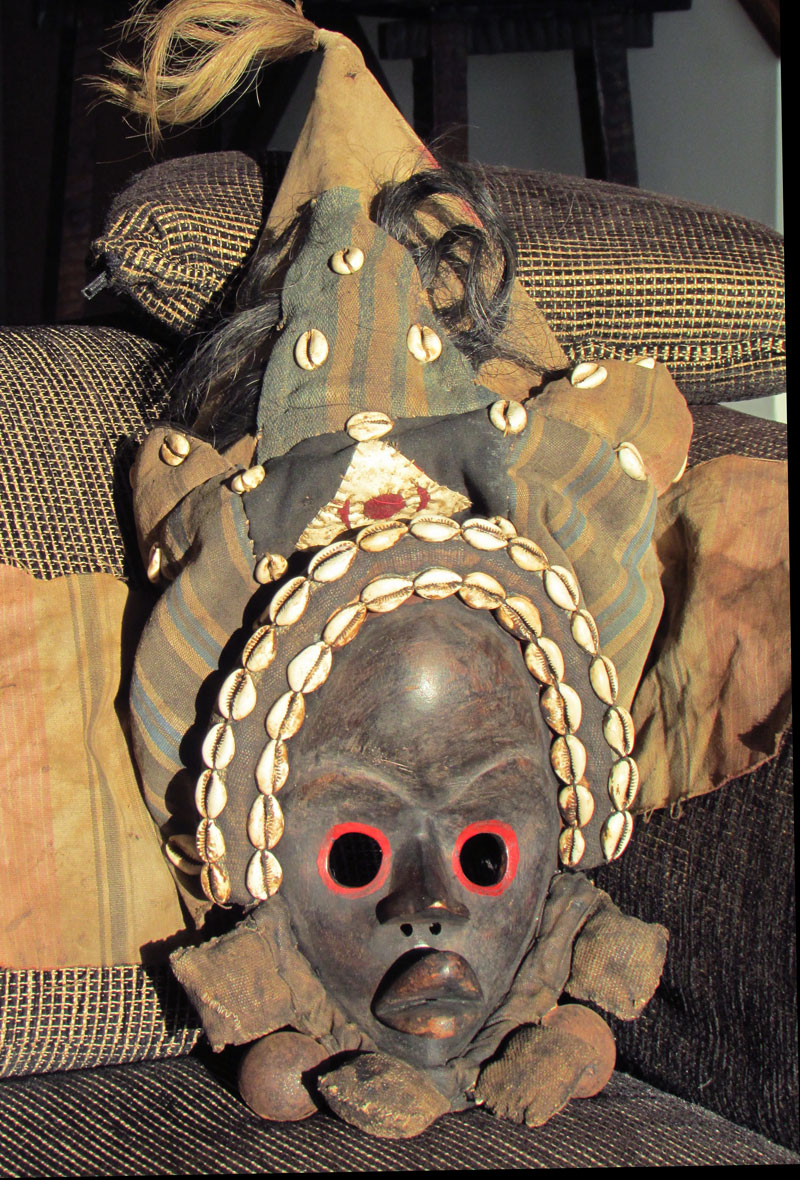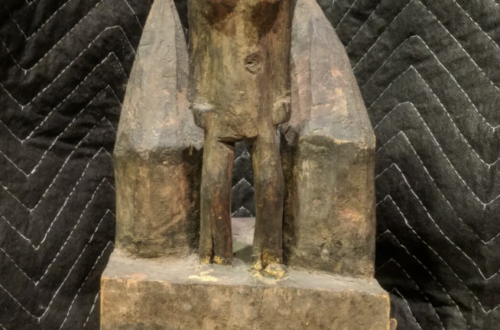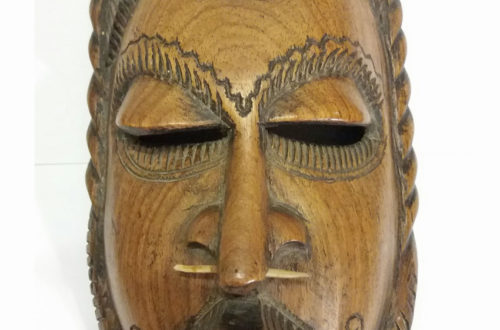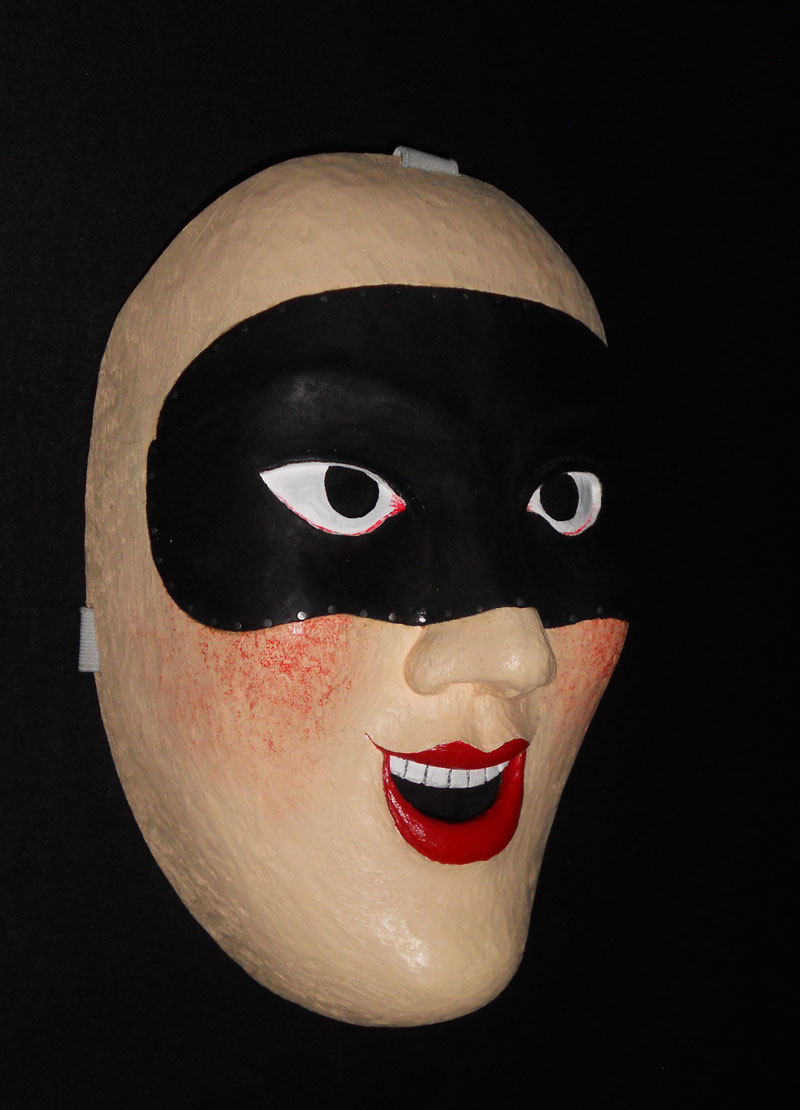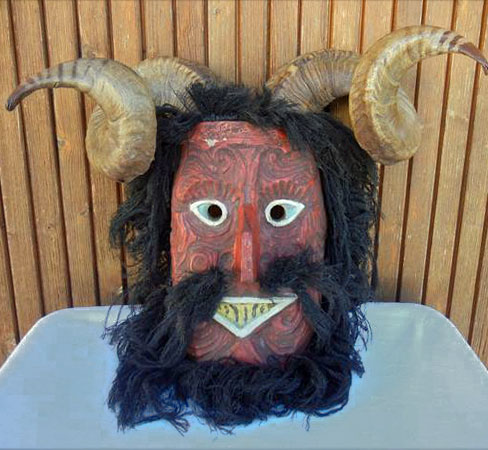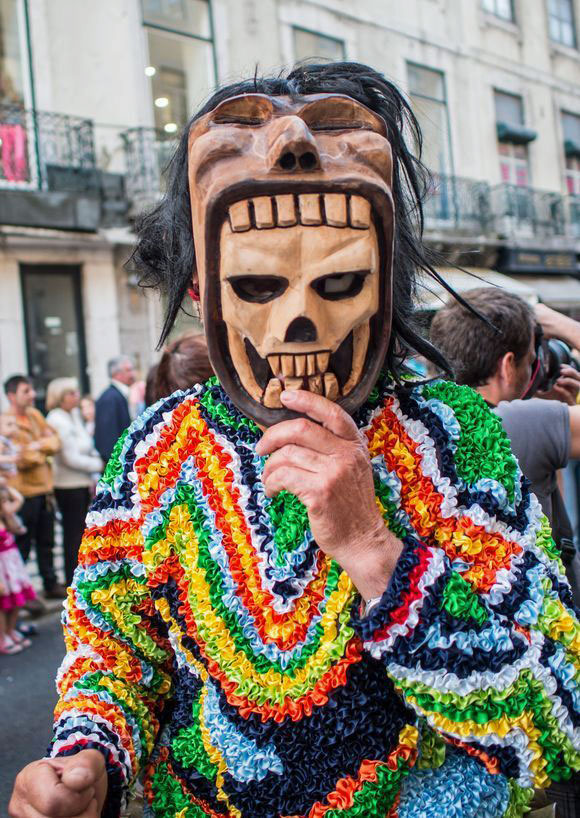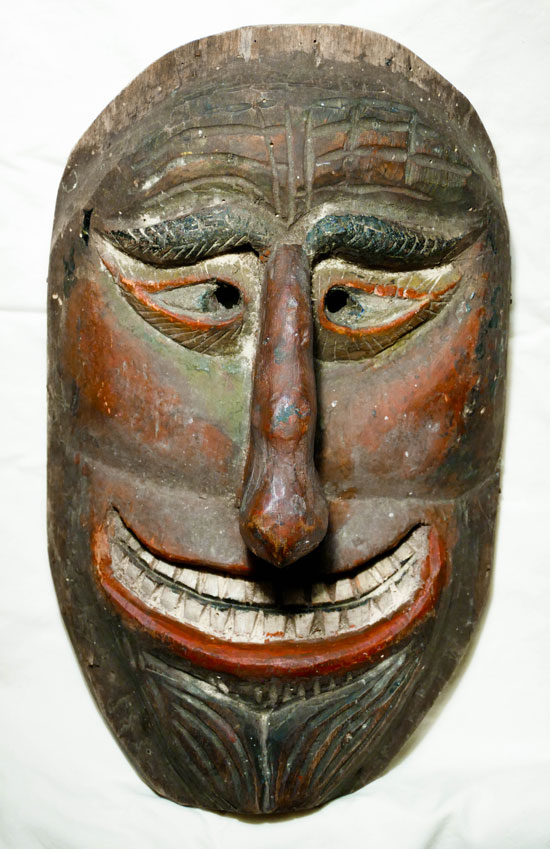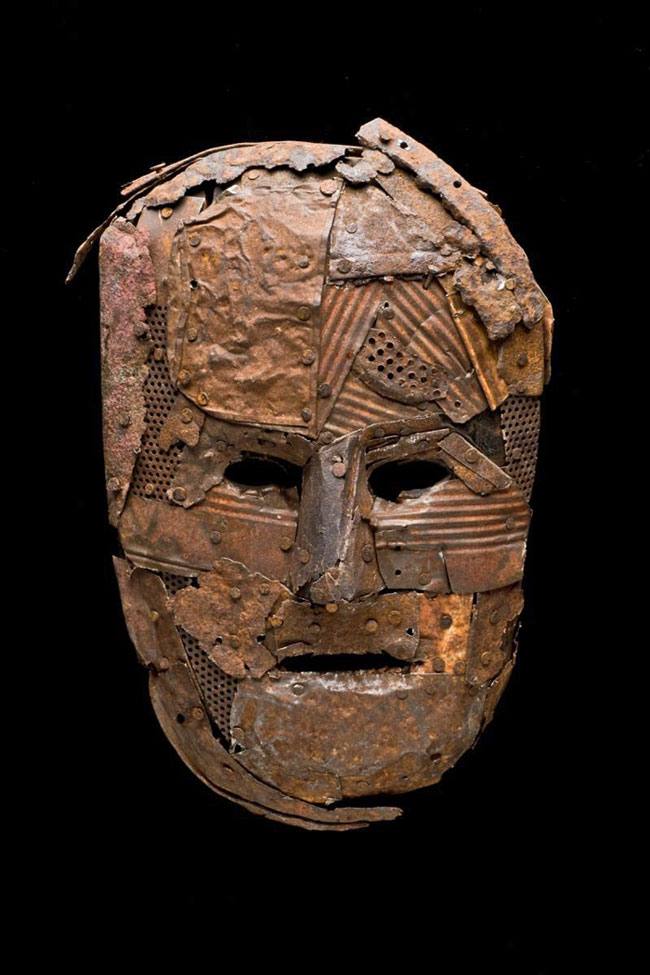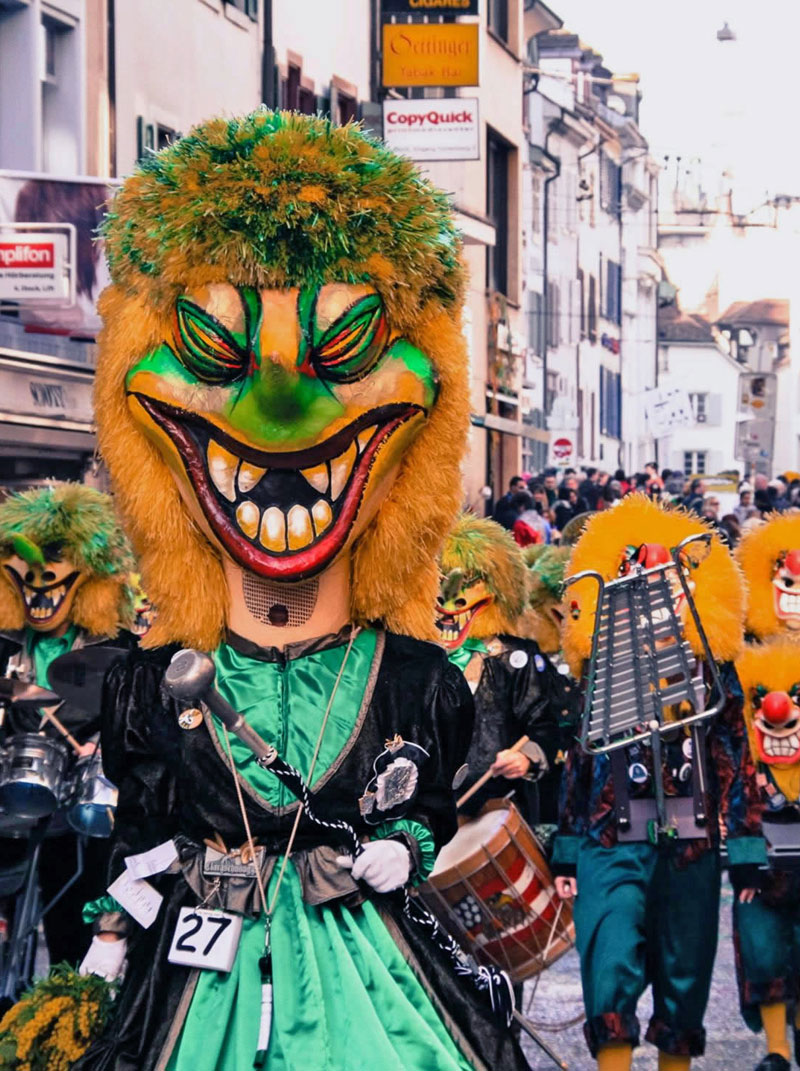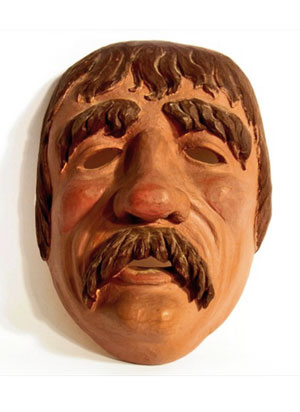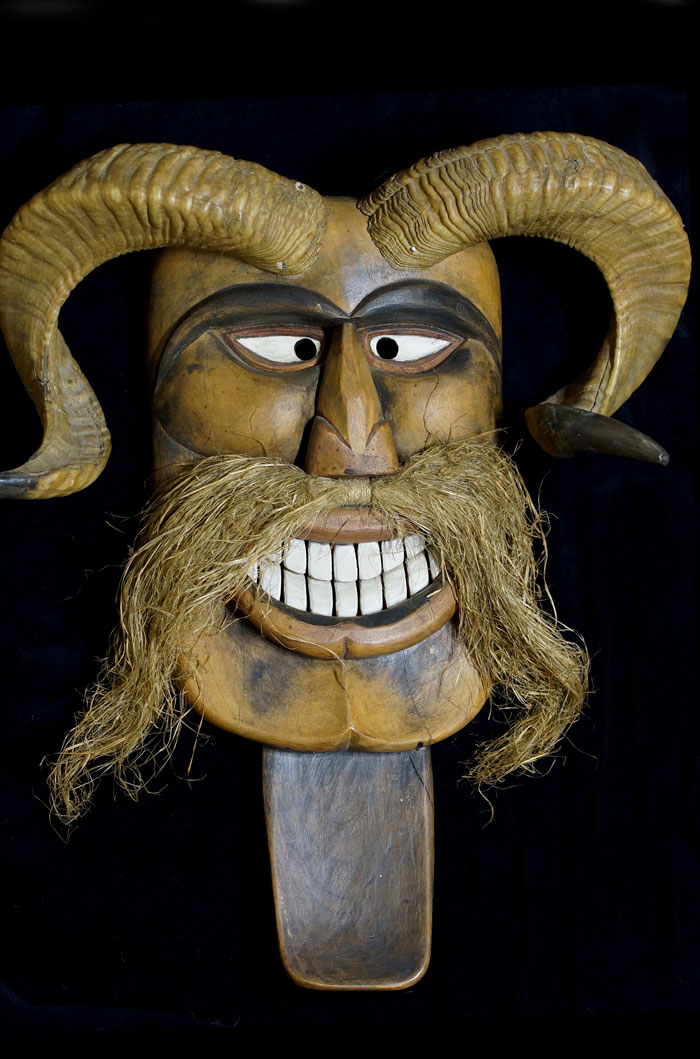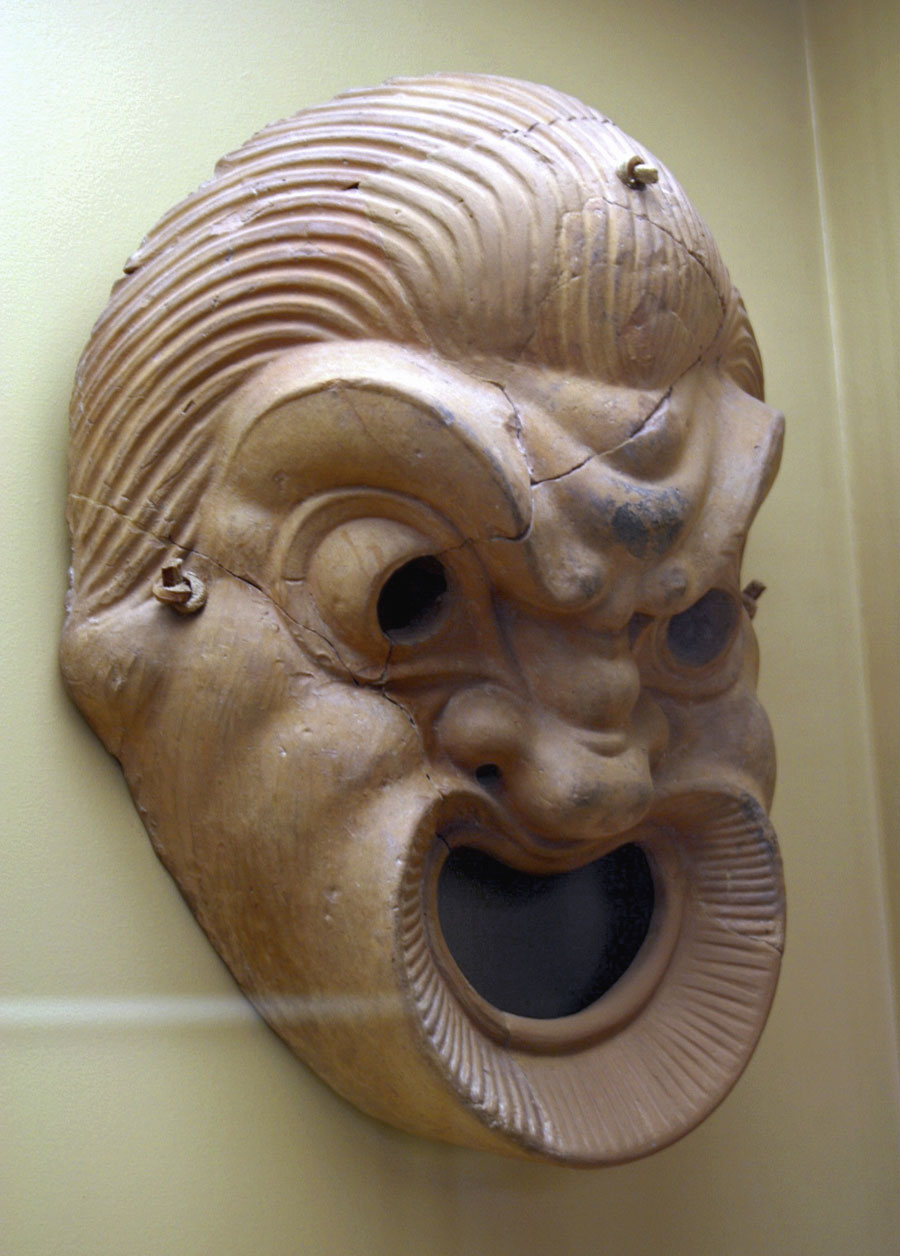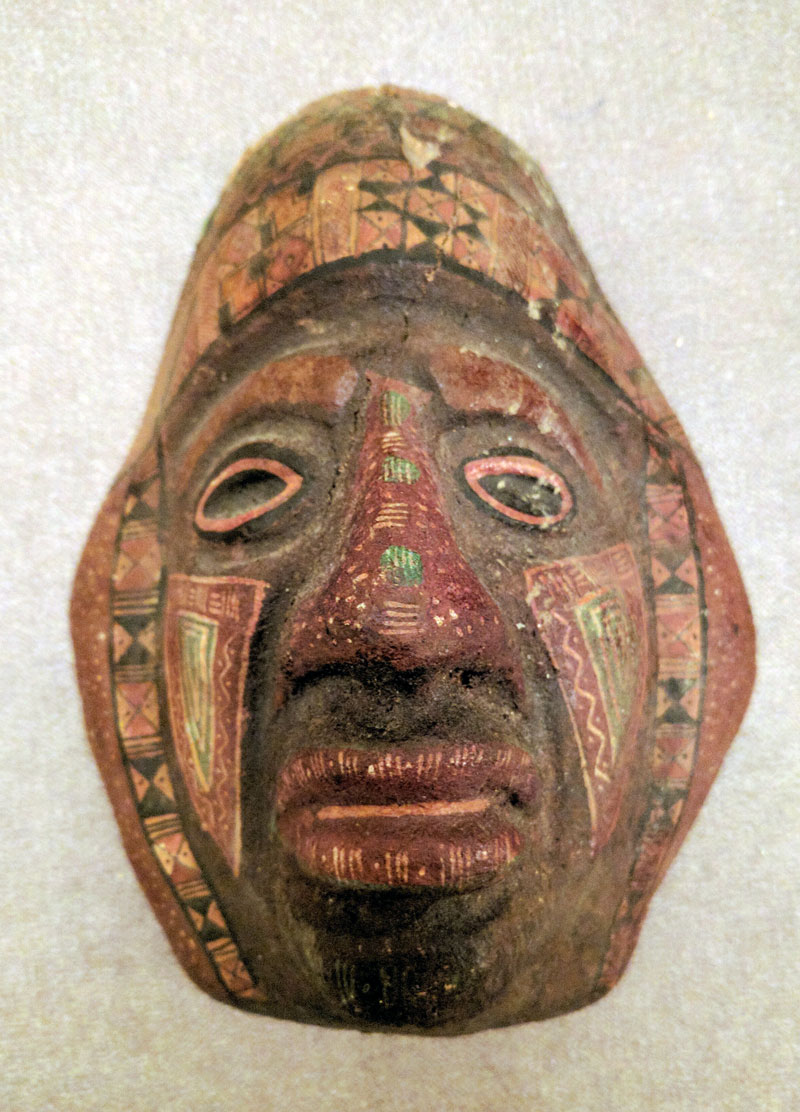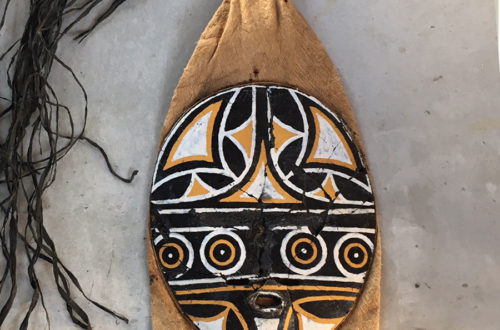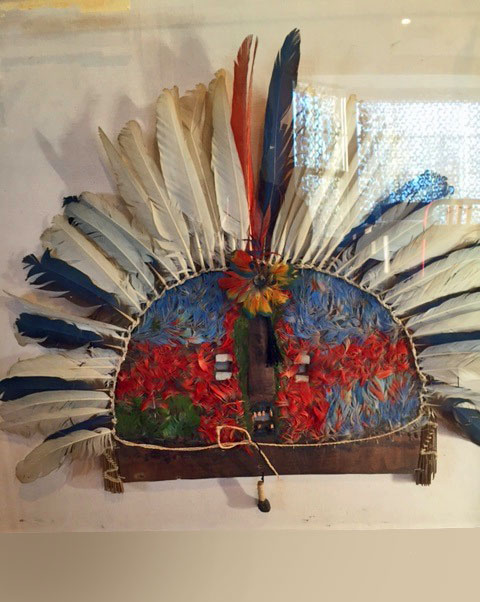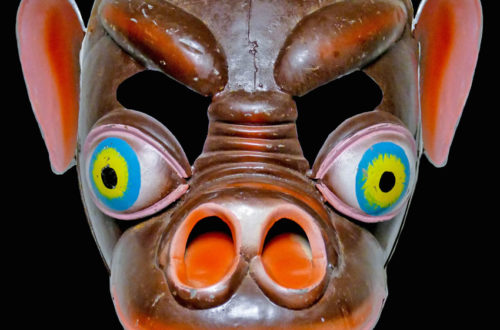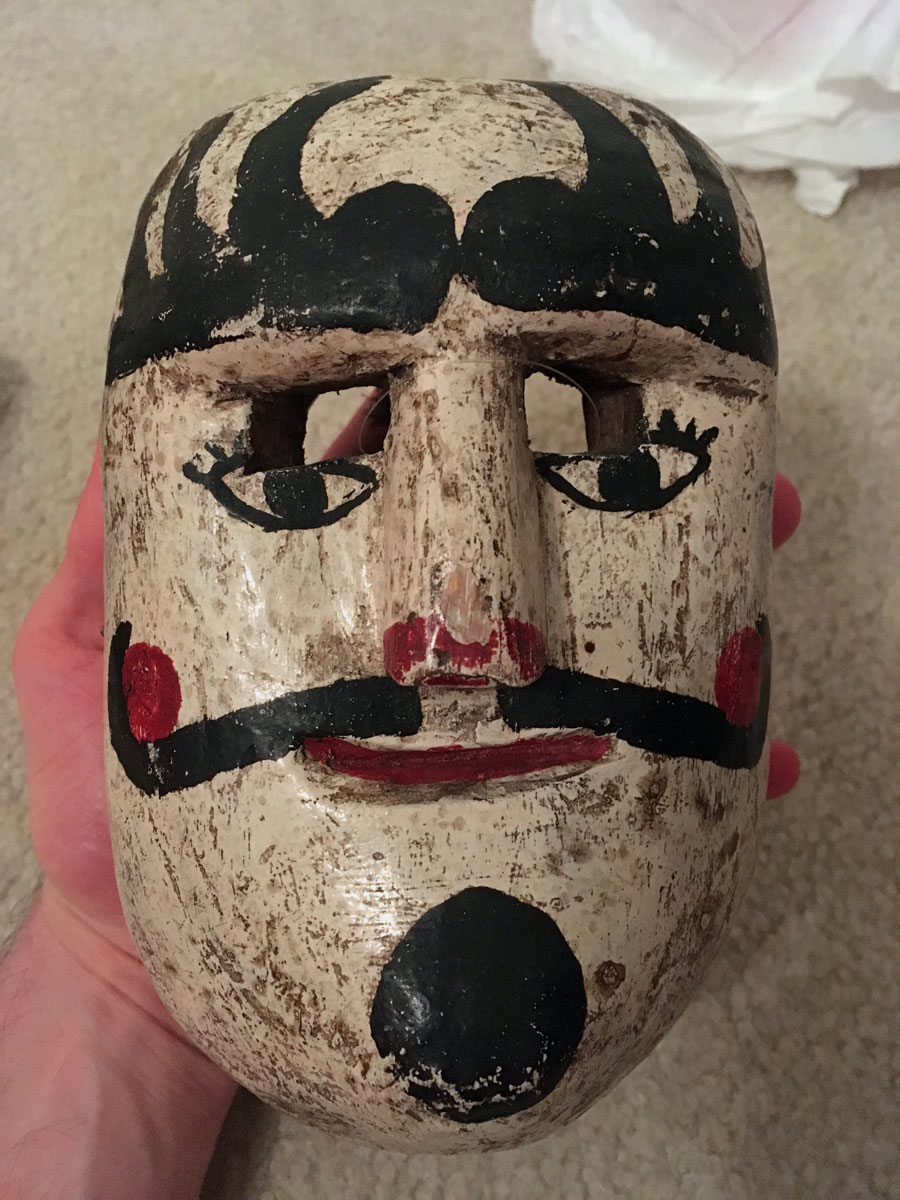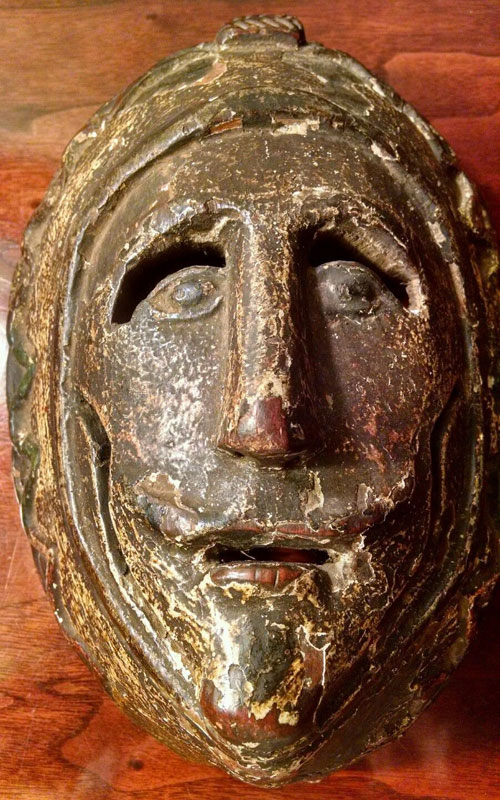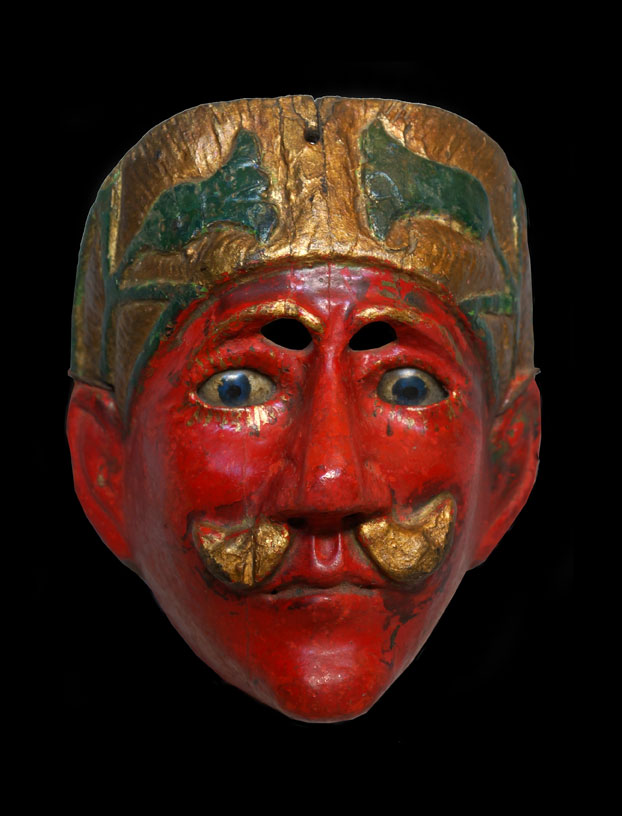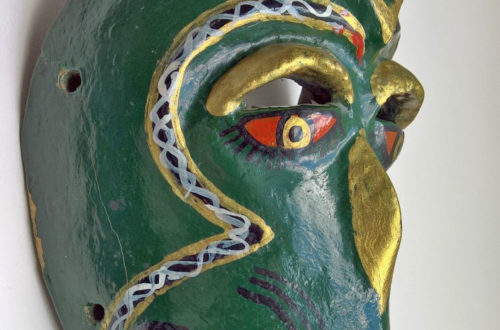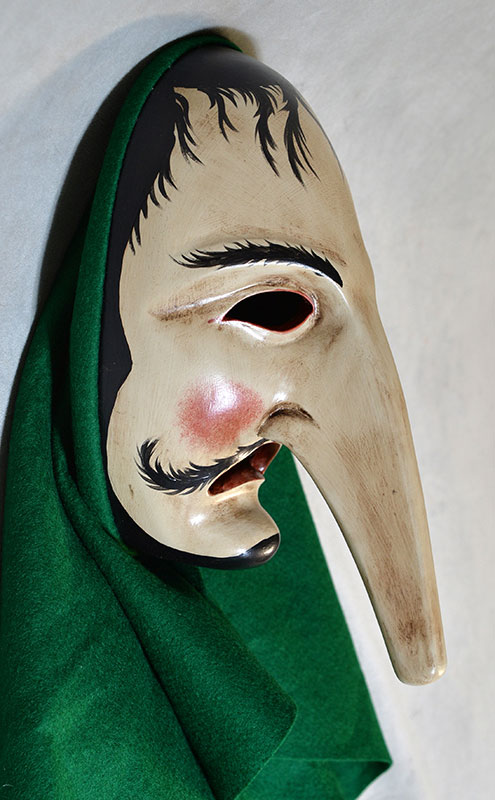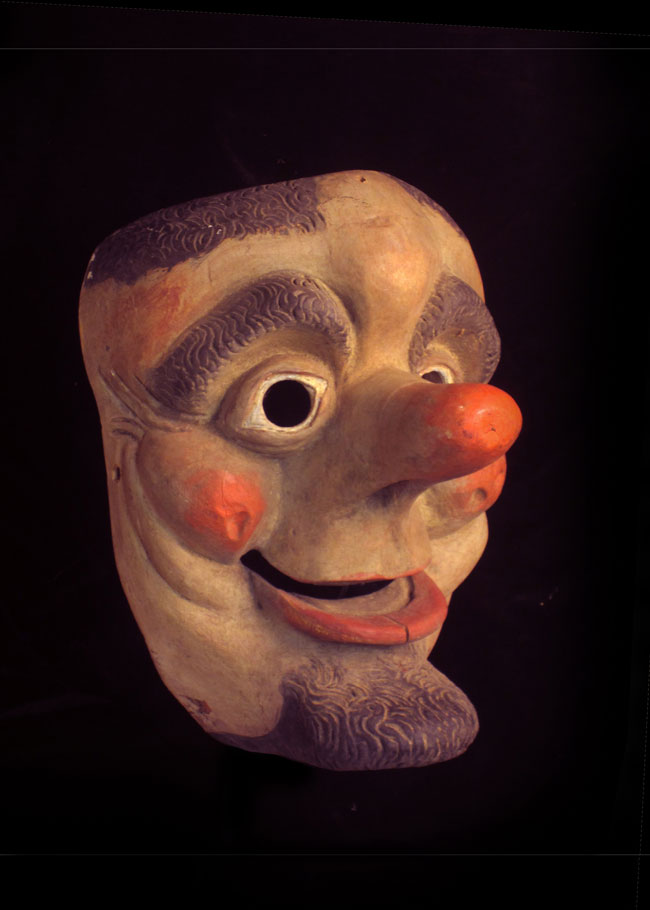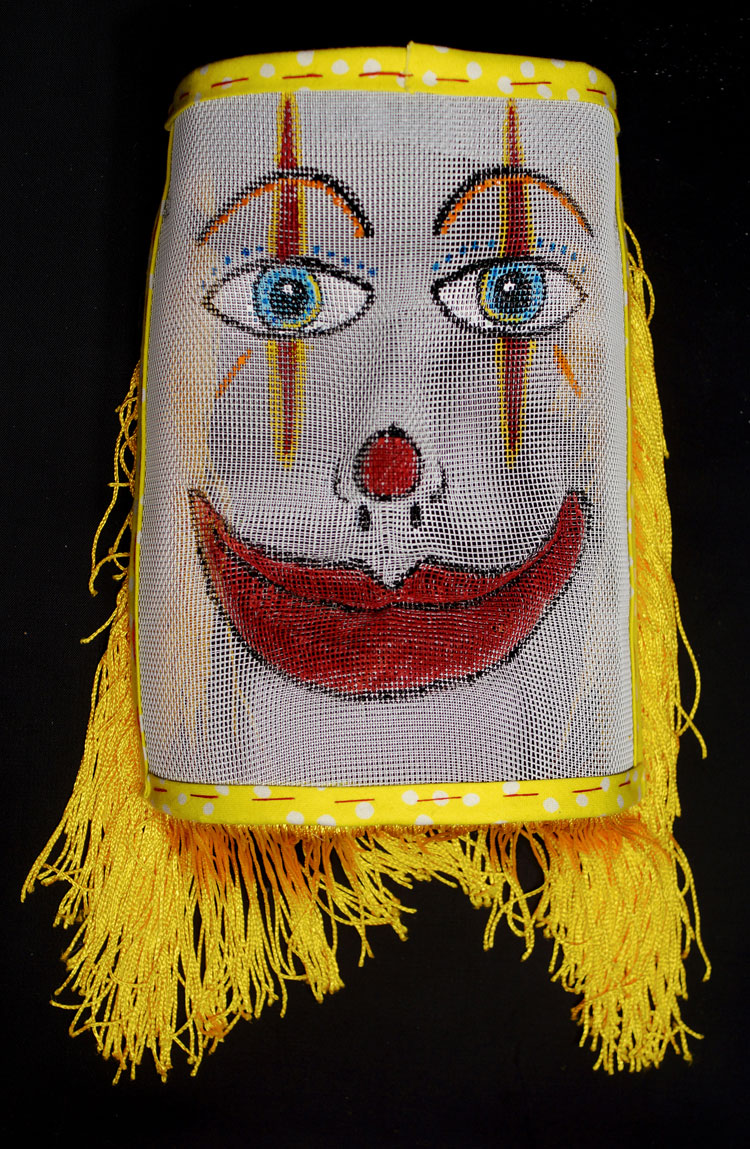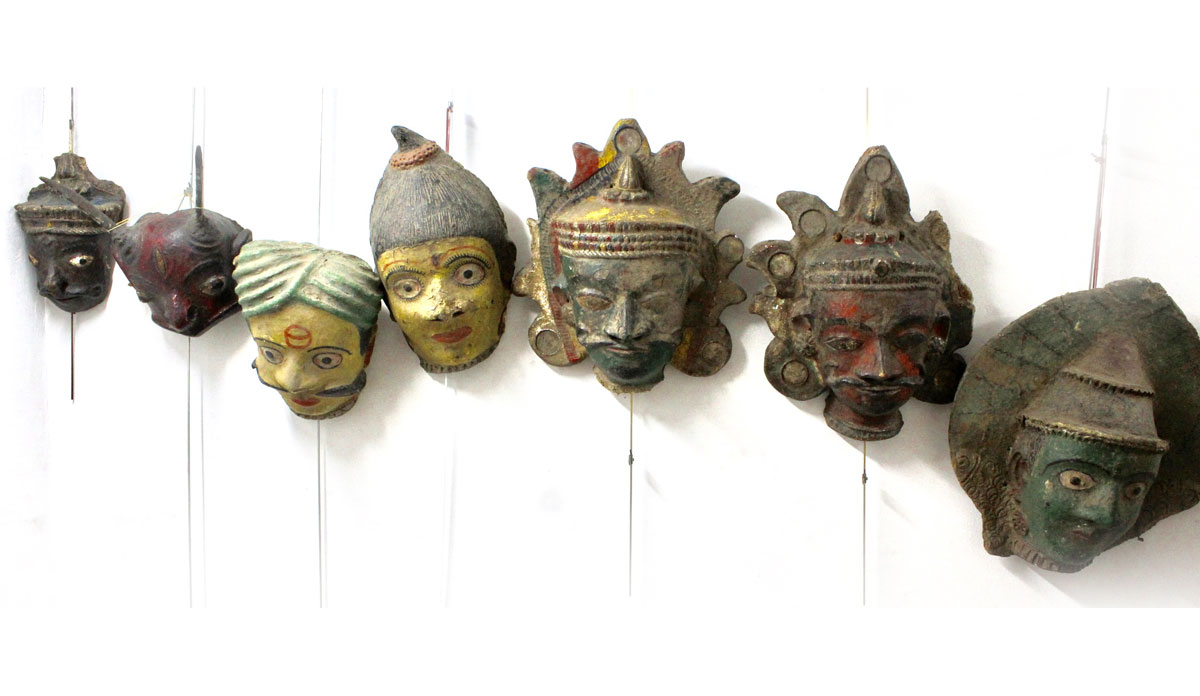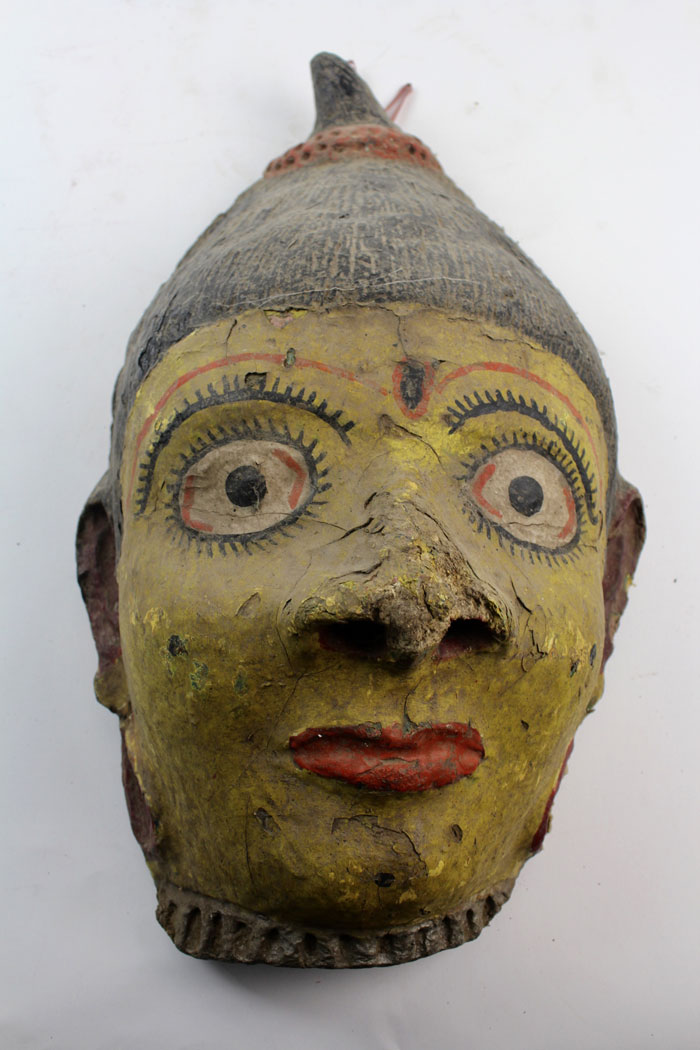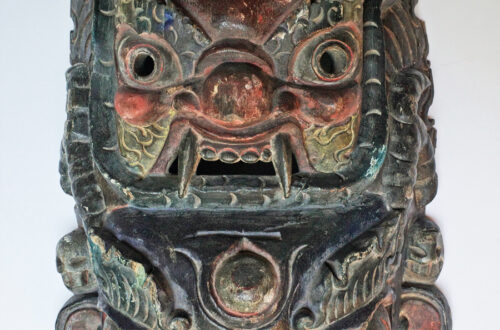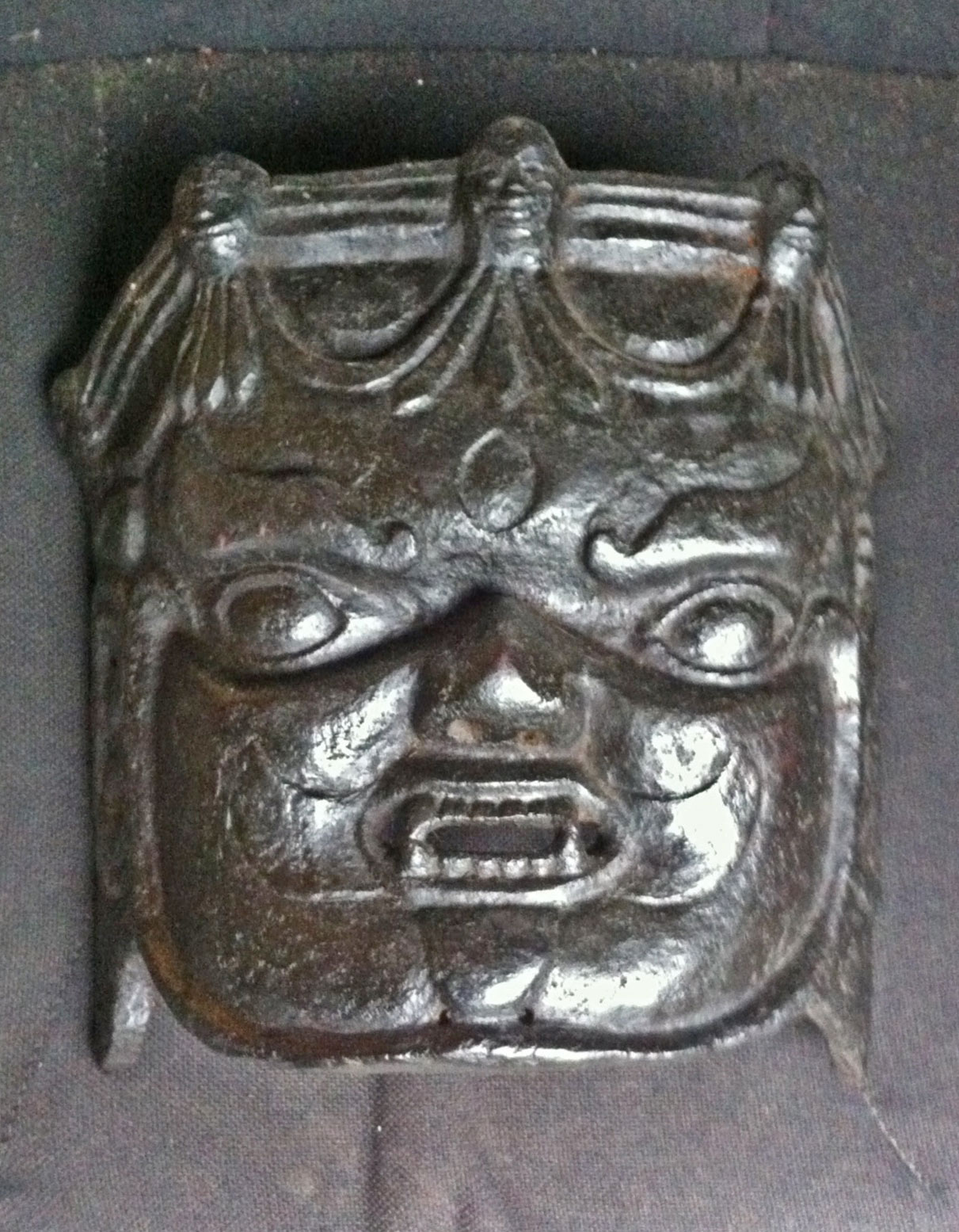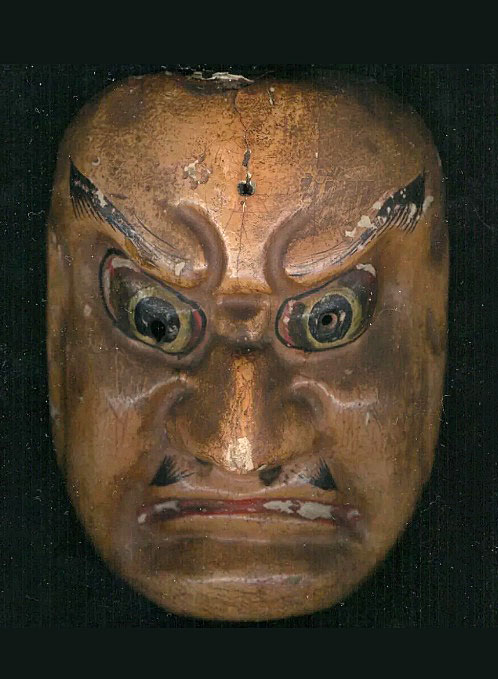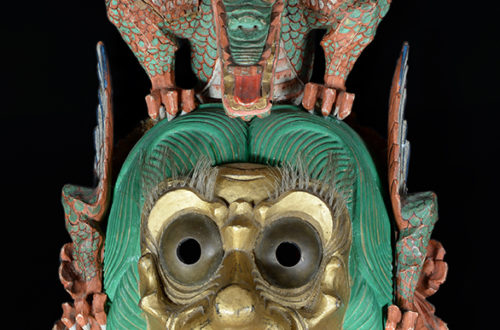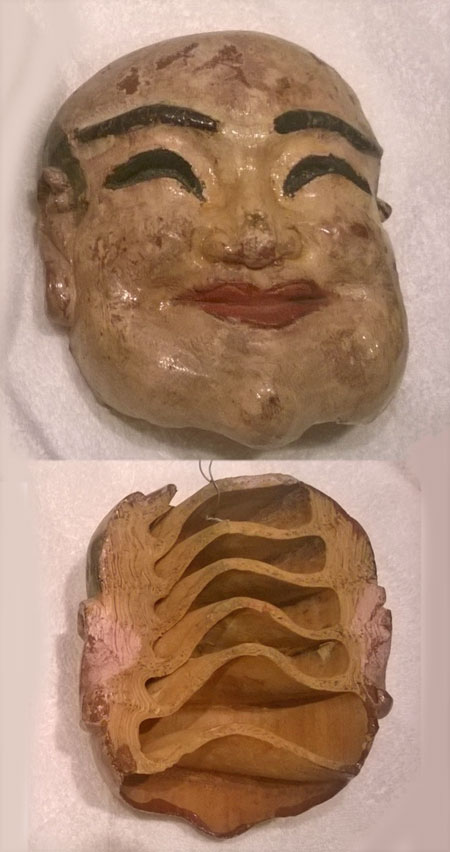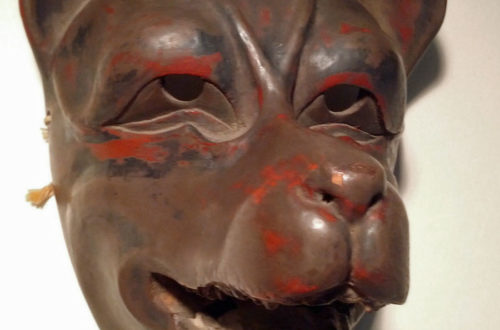This is a large circular mask carved from alder featuring a central human face set in a wide, flat radial border. The mask was made by artist and carver Peter Prevost of British Columbia, Canada and is Haida in style. The rim of the mask is carved wood and the face protrudes outward from the rim and has eye holes plus an open mouth. I got this on an interesting website by the Smithsonian Institution that is called www.grius.si.edu
-
-
Decorative African reproduction
Q: I received this mask from a friend who ran a record store in San Francisco in the ’90s and would occasionally buy artwork from a West African trader (country and price unknown). It has fabric flaps that must cover the ears, little floppy ears on top, and a conical headpiece. The tufts of hair may be from a goat or horse, they don’t appear to be human. There are two metal spheres that rattle attached to the lower front edge. There is a white arrow-shaped patch on the crown that appears to be made of plastic or rubber, with red embroidered stitching. C.C., 1270 A: This is a reproduction…
-
Swiss mask-maker talks about Das Domino
Chris tells us a lot about the tradition of masquerade in his town. It would be nice if others from the Pacific North West, Japan, Bali, etc. would do the same. Hi Bob, you are right, Carnival time is coming, or as we say here north of the Alps, Fasnacht, Fasnet or Fasching. I size this opportunity to exclusively present to you and your visitors my own new masquerade for my village’s celebrations. The character is called “das Domino” and it is part of the very traditional masquerade group of the “Nüssler”. You have already some time ago posted another character of the group, the “Blätz” (blog nr 1103). This…
-
The art of Paolo del Toro
On our website we call this art and categorize it under “miscellaneous.” Like almost all of our ethnographic masks it is a combination of sculpture and painting. Pictured here are three large felt masks that can be worn or hung on the wall. Paolo is a young British artist who now lives in Lancaster, PA. I’m told he will soon begin making smaller sized masks. Art masks are rarely this creative. You can contact Paolo by going to apololedroot@gmail.com or you can visit his website.
-
Carnival time is here
Carnival time in the Western world goes from Jan 1 to April 1, which is Easter. These kinds of masquerades occur in many villages and cities at different dates, but not in Africa or Asia. I don’t know when or where this particular parade happens in Switzerland. In the United States the principal Carnival celebration is in New Orleans, where the Carnival season opens on Twelfth Night (January 6) and climaxes with the Mardi Gras festivities commencing 10 days before Shrove Tuesday. Other places are different. Thus, in Munich in Bavaria the Carnival season, there called Fasching, begins on the feast of the Epiphany (January 6), while in Cologne in…
-
Precolonial funeral mask
Q Here is a mask I have. After research I did not find anything about it, so if you could tell me something I’d be very appreciative. Jelena, 1266 A Funeral masks were fairly common for many years until the Spanish arrived about 500 years ago in Central and South America. So is this a careful reproduction or the real thing? That’s an important question that I hope some of our viewers will comment on. I have little experience with ancient artifacts. Wait until you know before selling.
-
Repro of Patron mask from Guatemala
Q: I recently bought this mask and I would like to know if it’s authentic or if you would know anything more about it. The seller said it was a dance mask from Chichicastenango, Guatemala from the 1950s-1960s. The mask measures roughly 7” in length and 5” in width. Any help would be appreciated. Daniel, 1265 A: Here’s what Aaron has to say about a similar mask that is authentic. This is one is not, but it certainly looks like the real thing. B SUBREGION: Nahualá ETHNICITY: Mayan DESCRIPTION: Patrón Mask MAKER: Unknown CEREMONY: Danza del Patzcar AGE: 1980s MAIN MATERIAL: wood OTHER MATERIALS: oil-based paint; leather The Danza…
-
Classic Viennese carnival mask
Q: I’m from France. I’ve been passionate about masks since I was 10 years old. I found this Russian mask at a Christmas stand and I would like to know about it’s meaning and story. Lola A: Now that you know what it is, go to Google and learn more about your beautiful Italian mask.
-
7 masks from the Kuchipudi theater in India
Q: We found these seven masks near the city of Barcelona and the price we paid was about € 2700. We were told they belonged to a collector and were worth much more. Laia, 1263 A: I like these masks very much so I decided to share the group photo with our viewers. However I have little access to material on Indian masks. I’m going to guess they represent some of the many Hindu gods that are characters in the Kuchipudi theater. They would be from the state of Andhra Pradesh. It sure would be nice to know if I’m correct.
-
Old Noh theater mask
Q: I have and old Japanese mask but know nothing about it. Thanks! Oliver, 1262 A: I assume it is an old temple mask– something a monk has made for sale to faithful visitors to the temple. Or it could be an old man for a Noh play. I asked Oliver to send me some higher res scans and will post them when they come. Then I can make a few more comments.
